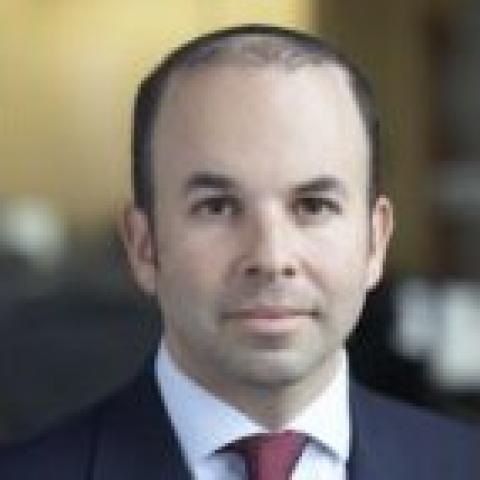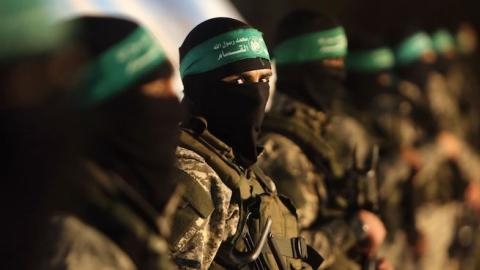Donald Trump signaled a new approach to the state of Israel even before he was sworn in. Despite his campaign rhetoric about being “even-handed” in pursuit of what he called “a great real-estate deal” between Israel and the Palestinians, he tilted toward the Jewish state both in his choice of ambassador and in breaking with the Obama administration’s hostile fixation on Israel’s West Bank settlements.
The sympathy Mr. Trump has shown for Israel may reflect long-standing respect for the Jewish state and the influence of Trump’s personal relations with strong friends of Israel. But it appears to reflect something more than that. In the year since his “even-handed” comment, he seems to have gained insight about the Palestinians’ leadership. In particular, he says he’s “seen” how they use their official power to promote violent hatred of Israel, especially among their children. “I think the Palestinians have to get rid of some of that hate that they’re taught from a very young age,” Trump said on February 15. “They’re taught tremendous hate. I’ve seen what they’re taught. . . . It starts at a very young age and it starts in the school room.”
It does indeed. The Palestinian Authority promotes violence against Israel. Officials do it in public speeches. PA-run television and radio make it a theme, as do the curricula and textbooks of PA schools. The incitement is so unrelenting that it’s drawn criticism even from supporters of the PA, such as President Obama—and, remarkably enough, from the United Nations Security Council.1
Incitement, however, is only part of the picture. Palestinian officials don’t rely only on words. To spur knifings, car-rammings, and the like, they use an apparatus of cash incentives. The PA has enacted legislation and created bureaucracies to ensure financial rewards for perpetrators of anti-Israel attacks. Payment amounts correlate to the number of people the terrorists manage to victimize. It’s a system that not only foments violence but also makes terrorism a lucrative career choice for young Palestinians.
Critics have labeled this system “pay for slay.” It has received little public attention—far less than the incitement issue. But it deserves more, especially because U.S. taxpayers help fund the blood payments. The U.S. government averages $400 million in annual aid to the PA, and those aid dollars are fungible.
The pay-for-slay system is neither secret nor private. Rather, it is open and official. And it’s not the work of Hamas, which governs Gaza and which the U.S. government categorizes as extremist and a terrorist organization. It’s the work of the PA, generally described as nonviolent and committed to peace.2
Created under the 1993 Oslo Accords between Israel and the Palestine Liberation Organization (PLO), the PA serves as the government of the Palestinian-administered territory in the West Bank. It was originally intended to exercise authority in both the West Bank and Gaza, but Hamas, the Muslim Brotherhood’s branch in Palestine, violently expelled it from Gaza in 2007 and now administers Gaza itself.
Within the PA, the predominant political organization is the PLO. Mahmoud Abbas, the PLO’s chairman, was elected PA president in January 2005 for a four-year term. Though that term expired long ago, the PA hasn’t held a more recent presidential election; Abbas remains president.
The PA’s relationship with the Israeli government is a bundle of contradictions. Israel recognizes the PA as the Palestinians’ political leadership. Israel collects taxes for it and turns revenues over to it. Security forces of Israel and the PA cooperate against some terrorists who threaten common interests. Abbas says he opposes widespread violence of the type that occurred during the First and Second Intifadas (1987–1993 and 2000–2005) and his security forces work with Israelis to prevent the outbreak of a new intifada.3
At the same time, however, the PA stokes hatred of Israel (and of Jews), urges anti-Israel attacks, and rewards terrorists. In other words, the PA encourages small-scale terrorism but cooperates with Israeli authorities to prevent larger-scale terrorism. The Israeli government finds itself in a mind-boggling twilight zone, partly of its own making. Its officials complain vehemently about incitement, but they’ve never tried to shut the PA down.
Legalism is a trait common among authoritarians. Nondemocratic societies lack rule of law, but they generally don’t lack laws. Their laws, in fact, tell us a lot about them. In the case of “pay for slay,” the relevant legislation is the PA’s “Amended Palestinian Prisoners Law No. 19 (2004).”
It guarantees “a dignified life” to anyone Israel has imprisoned “for his participation in the struggle against the occupation.” That is, it promises benefits to anyone caught for knifing, shooting, running over, or bombing people in Israel. The law lauds current and former terrorist prisoners as “a fighting sector and an integral part of the fabric of the Arab Palestinian society.”
Articles 5 and 8 apply to terrorists released from Israeli prisons. Those who served a year or more are exempted from
a. tuition fees at government schools and universities.
b. health insurance payments.
c. tuition fees for all professional training programs offered by the relevant official bodies.
Some released prisoners work as PA civil servants. For each of these, prison time served is accounted for as if it had been civil-service work: The law says the PA “shall pay his social security and pension fees . . . for the years he spent in prison.”
Articles 6 and 7 apply to terrorists still incarcerated. “Every incarcerated prisoner” is entitled to a monthly salary “linked to the cost-of-living index.” A portion thereof goes directly to the prisoner’s family.
In 2013, the PA amended the law to promise employment to released prisoners, giving them “priority in annual job placements in all State institutions.” If employment is unavailable for qualified prisoners, the amendment entitles them to a monthly salary, disability payments, and death benefits payable to their families.
The State, it says, “will make up the difference” if the salary of a released prisoner working as a civil servant “is lower than the salary he received in prison.”The PA pays monthly salaries to terrorists for life if they are men released from prison after five or more years or women after two or more years. Prisoners who served relatively short sentences are not entitled to employment; they get unemployment benefits for their periods of incarceration. Every prisoner who did time for at least a year, however, “is entitled to a one-time release grant.”
The law guarantees a “salaried position in a State institution” to any male ex-prisoner incarcerated for 10 or more years, and any female who served five years. The positions for such prisoners are high-ranking and highly paid, ensuring not only that long-incarcerated terrorists are financially comfortable but that they dominate the PA’s various bureaucracies. The PA has organized itself not only to be for terrorists, but also of and by terrorists.
These benefits now apply also “to members of PLO factions arrested outside of Palestine for participating in the struggle for the independence and liberation of Palestine.” Bonuses are paid if the terrorists are Israeli Arabs or Arab residents of Jerusalem.
The PA created the Prisoners and Released Prisoners Ministry to administer this program of support. The ministry received a PA budget allocation of $118 million in 2014 and $140 million in 2016.4 To provide for the families of dead terrorists, the PA created the Institution for the Care for the Families of the Martyrs. Its allocation was $163 million in 2014 and $175 million in 2016.5
These are enormous numbers, given that the PA annual budget totals approximately $4.4 billion. They reflect the generous size of the PA’s individual payments. Salaries start at $400 per month for terrorists incarcerated for up to three years. They rise to $570 for those in for three to five years, and $1,142 for five to 10 years. For those serving more than 30 years, the salary is $3,429. That’s per month. And this is a society in which the gross national product per capita amounts to $258 per month.
One-time grants to released prisoners start at $1,500 for terrorists who served one to three years and rise to $6,000 for those with 11-to-15-year terms and $25,000 for those over 30 years.
Monthly payments to families of dead terrorists are commensurately ample.
All of these payments increase according to the length of incarceration, which roughly correlates to the number of people that the terrorist killed or harmed. So the more victims in Israel, the more money the PA pays to the terrorist.6
What do we learn from this legal and bureaucratic apparatus to reward Palestinian terrorism?
The knifings and car-rammings that have characterized Palestinian terror emanating from the West Bank over the past two years are often described in the West as spontaneous signs of exasperation of Palestinians faced with oppressive Israeli occupation policies. But the official system of rewards for terrorism calls that into question. If exasperation were so potent a motivation, why would the PA have to offer such rich financial incentives to spur its people to violence?
Commonly described as peace-seeking and opposed to violence, the PA appears to contrast favorably with Hamas. But no one paying attention can honestly say that the PA opposes the murder of ordinary Israelis going about their business on the streets. In fact, the PA exerts itself to cause such murder, though it works to calibrate the violence. It blocks West Bank–based attacks by its Palestinian political opponents and works to head off devastating Israeli retaliation. It has been successful on both counts for the last dozen years.
The theme of PA propaganda is that the only way ultimately for the Palestinian people to maintain their honor and achieve justice is to drive the Jews violently off the land. Hence the praise of terrorists as heroes and martyrs, the naming of streets and public squares after Palestinians who have murdered Israelis in pizzerias and at bus stops, the school pageants at which small children are praised for saying they want to grow up to be killers of the Jewish “occupiers,” the laws promising large financial rewards for terrorism, and the ministries and other institutions that exist to pay terrorists.
Congressional hearings in 2014 brought to light the PA’s payments to imprisoned terrorists and their families. In 2015, Congress passed a law to reduce U.S. aid to the PA by one dollar for every dollar “expended by the Palestinian Authority as payments for acts of terrorism.” The Congressional Research Service reports that the State Department submitted a classified report to Congress on how much it reduced U.S. aid to the PA and how it determined the number.
To minimize the reduction in aid, the PA appears to have organized a subterfuge, masking such payments by routing them through the PLO. Congress responded in its aid appropriation act for 2017 by ordering a dollar-for-dollar reduction for all pro-terrorism payments made by either the PA or the PLO.
More and more members of Congress have become aware of the magnitude and formality of the PA program to pay rewards to terrorists. This is in part due to the murder of Taylor Force in March 2016. Force was a 28-year-old West Point graduate who was visiting the port of Jaffa, a Tel Aviv tourist attraction, when he was set upon. The Congressional Research Service described Force as “a former U.S. Army officer who served in Afghanistan and Iraq.” It noted that he was “stabbed to death by a Palestinian attacker” while on a “civilian study program in Israel.”
New legislation known as the Taylor Force Act has been introduced in the House and Senate. It conditions all Economic Support Funds for the PA on the U.S. secretary of state’s certification that the PA has “terminated payments for acts of terrorism against United States and Israeli citizens.”
The Palestinians have had wretched political leadership for a century, since World War I, when Britain ended Turkey’s 400-year ownership of Palestine. Their leaders have chosen the anti-democratic—and losing—side of every major conflict for the last hundred years. They chose the Turks in World War I, the Nazis in World War II, the Soviets in the Cold War, Saddam Hussein in the Gulf War, and the West’s enemies in the War on Terrorism. Most catastrophically for themselves, they chose Israel’s enemies in the Arab–Israeli conflict.
If Palestinian leaders had chosen to become Israel’s partners rather than its enemies, their people could have enjoyed peace and prosperity. Indeed, they could also have had Arab national independence, based on compromise—that is, on willingness to share the land with the State of Israel.
Despite everything—despite the long history of conflict—it remains possible that the Palestinians might someday achieve peace, prosperity, and some kind of national independence. But they’ll never get it if they continue to be dominated by dishonest, corrupt, authoritarian, and violent leaders. They’ll never get it if their leaders are the kind of people who pay rewards to terrorist murderers.





















